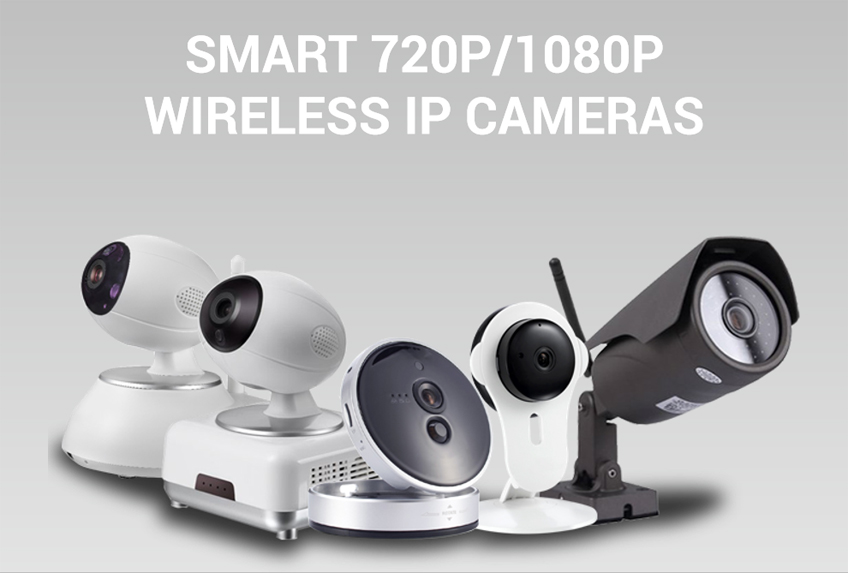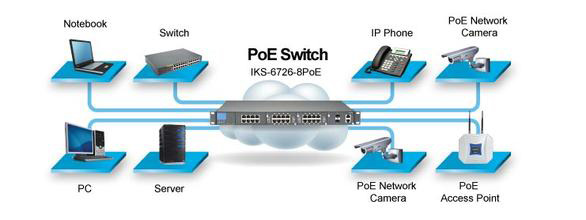
WiFi or PoE for IP camera, which is the best?
As one of pioneer digital camera manufacturers, we are providing many types of IP camera which support additional functions such as WiFi wireless connection, PoE, local video storage..etc. If you can get the IP camera that supports both WiFi and PoE, this is great. Unfortunately, such kind of IP camera is much more expensive than traditional IP camera. Moreover, it's unnecessary to have both WiFi, and PoE features.
#1. No need to use both WiFi and PoE
Yes, you can't use both WiFi and PoE at same time. When you connect the IP camera to your router, you have to choose one of them, either WiFi or PoE. Before you decide to buy an IP camera or a whole IP camera system, you should analysis the installation environment and investigate which functions you want to achieve. WiFi or PoE, which is the best? As a senior technician who has four years in video surveillance industry, my answer to this question is PoE is the recommended choice.
#2. What's WiFi
WiFi is a kind of wireless technology that allows network devices transmit data through wireless signal (2.4GHz UHF band, 5GHz SHF band). Obviously, once the IP camera supports WiFi, the camera can connect your router without using hardwired connection. WiFi can enable IP camera become portable, this is the advantage of WiFi. But there are two drawbacks on WiFi, which are; every electronic devices require power supply, that means your IP camera still requires cable for connection. So far, I haven't found any IP cameras are able to operate with batteries.
#3. How far does Wi-Fi reach?
Limited WiFi transmission distance is another problem. How far does Wi-Fi reach? It's not easy to answer this question. When talking about WiFi coverage, we have many things to consider including power rate of WiFi device, environment (indoor or outdoor) and more. Typically, a home/office router (TP-Link) can provide WiFi coverage reaches up to 10 meters indoor. When WiFi devices are working outdoor without barrier, the transmission distance will be much far. To extend the WiFi coverage or distance, you can install WiFi access point. Such an access point (or hotspot) has a range of about 20 meters (66 feet) indoors and a greater range outdoors.
#4. What's PoE?
PoE stands for Power over Ethernet, this isn't a new technology, the first device adopts PoE technology was launched by Cisco in 1999. Transmitting both data and power supply over single Ethernet cable (Cat5/6) is the main feature of PoE technology. As long as your IP camera supports PoE, you just need to connect it to a PoE NVR or PoE switch, then it works. PoE technology enable IP cameras support plug-and-play installation, which greatly reduced the installation procedures, and eliminate the necessity of power cable and supply. Today, PoE has two standard including IEEE802.3af, and IEEE802.3at. IEEE802.3af can provide maximum power rate is to 15.4 W of DC power (minimum 44V DC and 350mA) to each device. In order to provide power supply for high power consumption devices, the IEEE association made another new standard - IEEE802.3at, this standard also known as PoE+ or PoE plus, provides up to 25.5 W of power.
- PoE technology has been widely used in:
- IP surveillance system ( Camera + NVR)
- VoIP Phones
- WiFi Access Point
- Network Routers
- Industrial devices
#5. Cons and Pros of PoE technology
Let's firstly discuss the advantages of PoE. A PoE IP camera can get the power from the Ethernet cable, no need extra power cable or power supply. The maximum connection distance is 100 meters, which is ten times than WiFi. Since data transmission is through wired cable, there is no signal interference, no signal jamming. For properly working of PoE devices, Power sourcing equipment (PSE) is essential component, it can be a network PoE switch, or an intermediary device such as PoE injector. A PoE switch is much expensive than a traditional network switch, which increased a little on cost.

#6. WiFi vs PoE
No best solution, only right solution. If you want to install one single IP camera for home monitoring, you can choose to use WiFi IP camera. Ensuring the WiFi IP camera is installed within coverage of your WiFi router. For more than one IP camera, PoE is recommended. PoE is much reliable than WiFi in terms of data transmission. Furthermore, an IP camera system based on PoE is much easier to manage, centralized power solution becomes available e.g using uninterruptible power supply (UPS). From my personal investigation of surveillance market, I found that WiFi IP cameras are widely used for non-professional indoor home security, and PoE IP cameras are installed for outdoor surveillance system.
These are information what I know about WiFi and PoE. If you have different opinions on this matter, please sharing your thoughts by making comments below.
Get My Latest Posts
Subscribe to get the latest updates.
Your email address will never be shared with any 3rd parties.